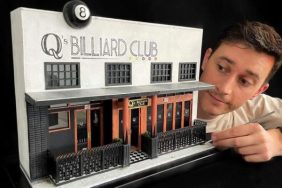London based design firm EVA (Emergent Vernacular Architecture) is making good on its manifest to create ethical and socially-aware design. The team of Jeannie S Lee and Andrea Panizzo have endeavored to help dig Haiti up from the rubble of a devastating and debilitating earthquake that brought the island nation to its knees. And while architecture firms lending a hand for humanitarian aid might seem like a flash in the pan or the flavor of the month for good deeds, helping others is essentially a part of the DNA for EVA.
Most recently the team visited the migrant camps of Calais before the camps were bulldozed to smithereens by the French government. So being a part of the solution is not a new venture for the year-old firm. Haiti is an investment on both a personal and professional level for the design visionaries.
We had an opportunity to chat with Andrea Panizzo while he was on a work site in Haiti and discover much of what it’s like building viable accommodations for a community in the throes of a humanitarian crisis.
CRAVE: Why are you a designer? What led you to your current drive to build and render the work that you undertake at EVA?

EVA designer Andrea Panizzo. Photo courtesy of Andrea Panizzo.
ANDREA PANIZZO: It was during my years of training, that I started realizing the great potential behind the role of an architect. When I started EVA with Jeannie Lee, over a year ago, we instinctively understood that we wanted EVA to be a research-based practice. The design goal is aimed at identifying and highlighting an existing pattern and upgrading the space into a landmark for the community.
Much of what we see about EVA via the site references humanitarian endeavors. Haiti must present its own unique set of challenges and rewards. When and how did Haiti become a part of the discussion at EVA? What was the process that ultimately led to EVA working with the communities to rebuild there? What sort of accommodations are being erected?

A view of Haiti from above. Photo courtesy of Andrea Panizzo.
EVA was founded after I first arrived in Haiti in 2011. In fact, the work was undertaken during the early years. Port-au-Prince is eventually what made me decide to start an architectural studio on my own. I guess I like to work in challenging contexts and to establish a process to support communities through architectural design. The needs of people living in an informal settlement, educational inequity or this current immigration crisis in Europe are for instance among those social problematics that I think designers could really help with. We are currently working on different projects with Global Communities, American Red Cross, and USAID, most of which are under construction: a school for disabled children in Delmas 32 (a large-scale slum in Port-au-Prince), three public spaces in Carrefour Feuille, (another informal neighborhood which has much suffered from 2010 quake), a regional headquarter for the Haitian Red Cross and two public spaces in Caracol in Northern Haiti.

An image from an EVA construction site. Photo courtesy of Andrea Panizzo.
What is some of the feedback the Haitian community has given you in the wake of the earthquake about how they would like to rebuild their lives?
On one level the reality is that with, or most likely, without us (professionals) Port-au-Prince is growing informally, and Haitians build their neighborhoods themselves. However, on the smaller scale of our projects, we constantly receive feedback from community members and from builders on how to best integrate the design within the
existing context. Without those, there is no process. The key lies in keeping the conversation with the communities always open. The ultimate beneficiaries have to be involved in the design process, from the brief to the post-occupancy. I am so curious to go back to Haiti in ten years’ time and learn how the public spaces we designed will be used, and if they had a real impact on the community.
A crisis of another kind is the migrant crisis sweeping through Europe. You recently visited Calais to see firsthand what was happening at the migrant camps. Why were you driven to go to Calais? What were some of the takeaways from what you saw there? Anything inform how you might render design in the future, particularly in a humanitarian crisis?
We ultimately decided to go to visit the camp in Calais with the aim of observing and to trying to understand the situation with our own eyes. We read a lot about the Jungle, but what we saw, in reality, was surprisingly unexpected. Despite the obvious low-cost construction technologies of what has been pictured by the local authorities as a temporary camp, this community showed clear evidence of being a permanent phenomenon of human space occupation: informal retail and barber shops, restaurants, mosques and churches had been built to provide the community with a sense of identity and ownership, while migrants were waiting for formal processing.
It was disappointing indeed to see the new camp made out of shipping containers to house 1,000 refugees, built by the local authorities. It represents to us a missed opportunity. The containers are set up like dormitories and there are no kitchen facilities.

EVA is currently building new structures in Haiti while working directly with the community. Photo courtesy of Andrea Panizzo.
It is fenced and controlled like a detention center with no communal spaces. We just wanted to observe and learn more about the current situation, and our intent is not to make premature speculations; however a question is redundant. Local authorities don’t want a permanent settlement. And residents are not intent on staying. Could the solution lay in providing a permanent human infrastructure to house temporary residents? According to UNHCR, 17 years is the average length of stay in a refugee camp. It is unsustainable not to work together and to provide better alternatives.
Has the design community been conspicuously absent from conversation? If so, why do you think? What needs to happen to bring more architects and designers into the discussion about helping in the migrant crisis or in humanitarian crises in general?
To us, the architectural community has not been absent but has not particularly contributed to the conversation either. We believe the solution is not to provide a premature design response, but to analyze and study valuable alternatives, as architects and designers could play such a key role in this complex situation by coming up with solutions that bridge political acceptability, economic feasibility, and dignity.
What does EVA have next on the horizon? Any other camps you imagine to visit?
We will soon start the design of new public spaces and community centers in Canaan (Haiti), a settlement that started as a small post-quake tent camp of internally displaced people (built by the Haitians) and quickly grew into what is now the third-largest metropolitan area in the country.
If we have the opportunity we would like to visit the MSF camp in Grande-Synthe and the second largest refugees’ camp in the world, Zaatari, in Jordan, which houses over 80,000 Syrians. We don’t yet know where this research about the refugee crisis is going to lead us, but we are definitely interested in undertaking a deeper analysis and understanding how we could effectively assist other organizations and local institutions.








